Your 8 Step Action Plan to Support Students Struggling with Fluency

At a certain point in a child's reading development we start the focus on fluency and one of the signs of a struggling reader is stilted, slow reading even after several years of reading instruction. The Australian Curriculum says that children should be ‘practising fluency’ from foundation the foundation year and ‘using fluency’ from year 1. I’m really sorry (ok, not sorry) but what on earth does that even mean? As teachers we are often left to our own devices to interpret what fluency actually is. If your school uses a benchmark reading assessment (I’m not a fan – read more here) then fluency is left entirely to us to determine.
Thankfully a sensible person in the South Australian Department of Education has compiled a guide to fluency that helps us understand what fluency is and what we can do to support it.
Firstly, let’s get it straight that fluency is not just reading fast. Yes, children need to read at a certain rate for comprehension to be maintained, however there are other elements of fluency that we can sometimes miss.
Accuracy
Oh my wordy lordy (teachers over a certain age will remember the wonderful Magda in Fast Forward!) this is where it all begins. There are so many ‘fluency building’ passages on the internet that we might give children to practice with, but none of them will be effective unless the student is accurate at decoding.
Before giving students fluency passages or ‘practising fluency’ in a guided reading session check in that they have developed automaticity at sound and word level. You can do this by literally showing them graphemes and then words with those graphemes and seeing if they read them without effort. When children can read pseudo words (such as in the phonics screening check) effortlessly and without ‘sounding out’ you know that they have developed automatic word reading.
This is a VERY different thing from memorising a bank of ‘sight words’. (You can read more about this here). It is about the child having developed orthographic mapping so that they can automatically retrieve graphemes, patterns and even whole words from their long-term memory.
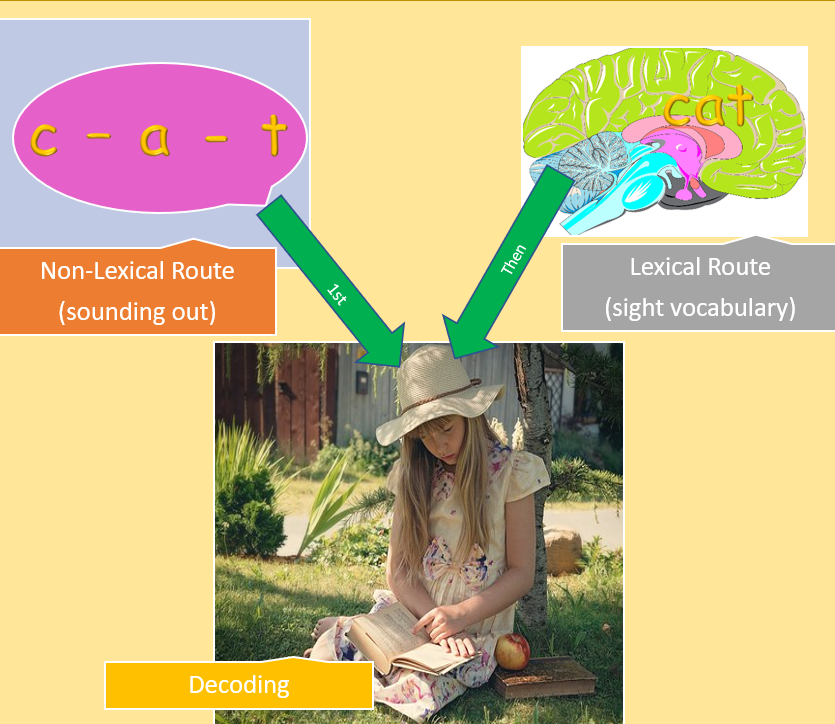
Word level fluency is built through study of the alphabetic code and developing the ability to blend with ease, NOT through learning a range of ‘sight words’ as global shapes.
So when you consider fluency, consider accuracy at four levels of text
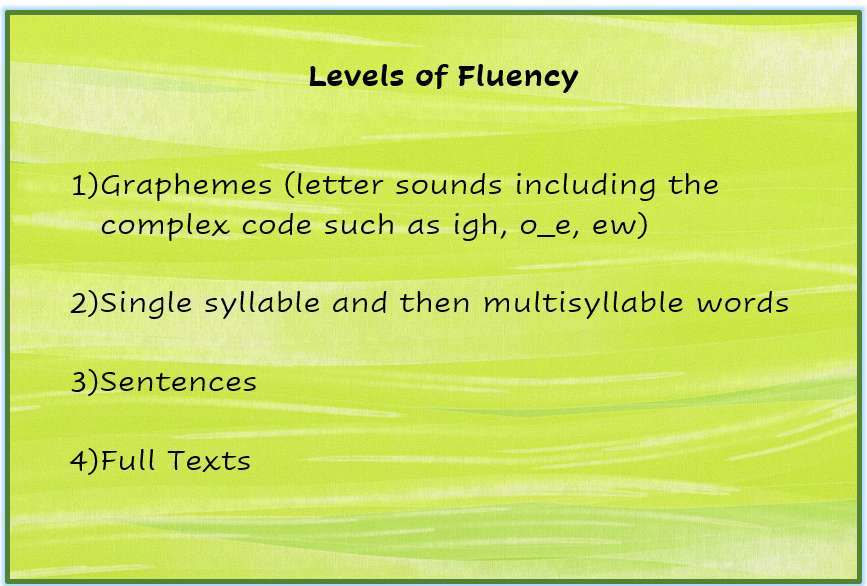
Knowing what your students’ needs are means that you can pinpoint instruction and support at the exact point of need rather than apply a broad strategy and hoping that it works.
The Next Steps
Rate
If we are going to truly measure a student’s reading success we need to be measuring reading rate. While not a goal in and of itself, reading rate does significantly impact on fluency and therefore comprehension.
My suggestion is that reading rate is measured once children have mastered the initial code (single sounds and most common consonant digraphs sh, ch, th, ng, qu) and are well on the way to mastering the complex code.
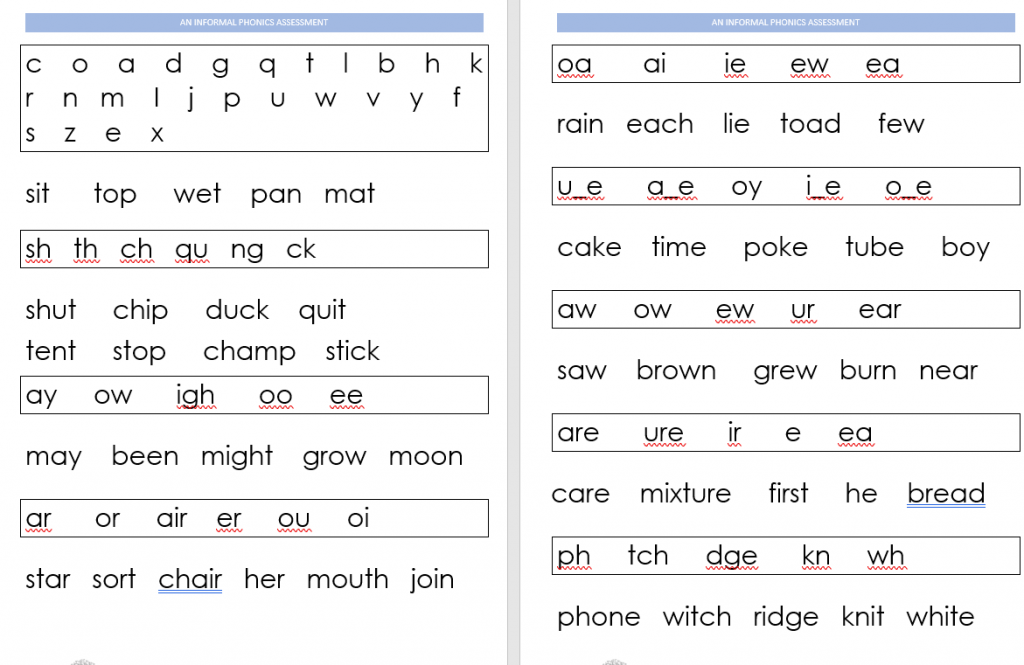
Having a goal post to aim for in reading rate is important. It might surprise you to see the numbers below and what is expected of students at different ages. I recall doing a unit on taking running records at university (insert forehead slap here) and watching a clip of a child stumble their way through a predictable text. The reading rate was at about 20 words per minute. The lecturer said, “There’s some really good reading going on here”. At the time I didn’t think that sounded right but accepted that she was the expert. Oh how times have changed!
The reality is that children who are taught with strong evidence-based practice are able to reach these goals. Even children who might be vulnerable in their learning, given quality instruction can achieve this. Sure, it might not be in the time frames outlined below but it is possible that 99% of children leave primary school reading at 100 wpm in a reasonably complex text.
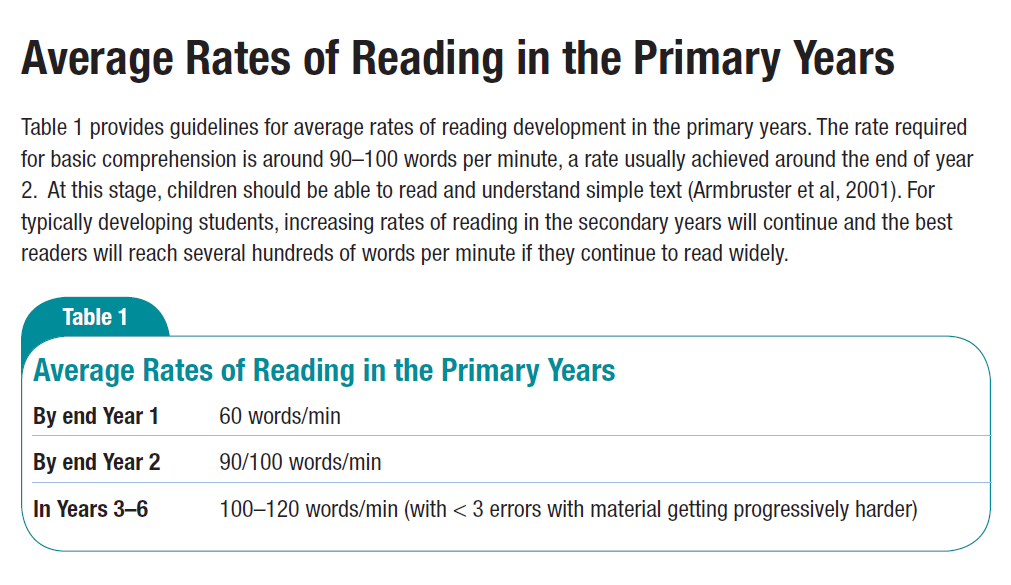
Once sound decoding skills are established you can shift attention to prosidy.
Prosidy is influenced by several factors including a student’s ability decode automatically, their comprehension of the language of the text, the background knowledge that they possess about the text level norms and the content of the text. In addition, knowledge of punctuation is important so that they help children to apply appropriate phrasing, stress and rhythm to their reading.

Your Action Plan for Supporting Students Struggling with Fluency
- Teach phonics, including the complex code, systematically using a structured and cumulative approach.
- Provide decodable texts so that students develop the ability to blend with graphemes instead of guessing at words from the pictures.
- Explicitly teach children about prefixes and suffixes and provide practice reading multi-syllable words so that they know how to tackle these in texts.
- Teach irregular high frequency words using a word study approach rather than a flash card approach.
- Explicitly teach students about punctuation beyond capital letters and full stops and teach about how punctuation contributes to meaning.
- Model prosidy through daily reading (teacher reads to students)
- Make repeated reading part of your reading instruction.
- Ensure that children have sufficient vocabulary knowledge to understand the content of the text
As one of the 5 essential components of reading instruction, fluency does need to be addressed in your reading lesson. This will come about through a strong focus on phonemic awareness, phonics and vocabulary rather than on teaching fluency as an isolated ‘skill’.

 Jocelyn Seamer Education
Jocelyn Seamer Education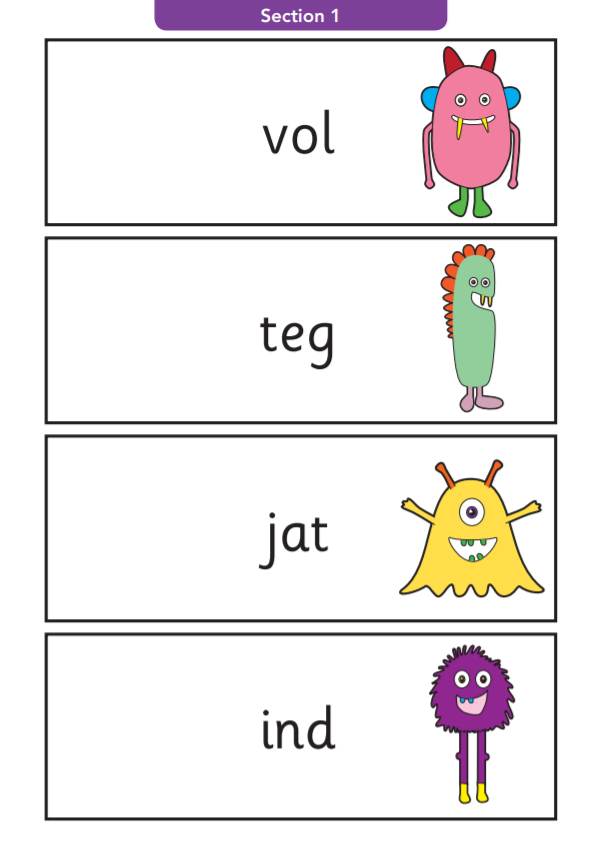
9 comments
I’ve just started reading your blog and I’ve watched some of the videos. It is really exciting me as it is making so much sense! Can you explain how you administer the informal assessment? I
Thank you from the United States for the 8 Step Fluency Plan! I just did a Read Plan for a struggling reader in my 2nd grade class. According to this student's intervention teacher, her first goal is phonics, and 2nd is fluency. I've been trying to decide how to teach and monitor her fluency. (She has mastered the initial code, and we have been working on the complex code for awhile. She can read most of the vowel digraphs reasonably well, but has not mastered spelling with them.) Part of monitoring her fluency will involve her rate. What would you suggest I use to monitor her rate?
Leave a comment